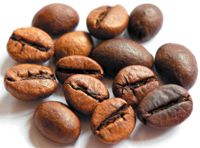Food Metabolomics in Practice
Dr Sastia Prama Putri of Osaka University, Japan, spoke to Kate Mosford of The Column about advances in metabolomics, the need for authentication of high value food products, and the important role of GC–MS in food analysis.
Dr Sastia Prama Putri of Osaka University, Japan, spoke to Kate Mosford of The Column about advances in metabolomics, the need for authentication of high value food products, and the important role of gas chromatography–mass spectrometry (GC–MS) in food analysis.
Q: How did you become involved in metabolomics?
Sastia Prama Putri

A. My research focus was initially on the discovery of novel bioactive compounds from various natural products. I joined a metabolomics laboratory in early 2011, and have since been involved in several research projects on metabolomics applications in food science and metabolic engineering fields.
Q: What is the role of your laboratory in food metabolomics?
A. The Laboratory of Bioresource Engineering, Osaka University (also known as Fukusaki laboratory) has been involved in food metabolomics research since 2007. One of the first food metabolomics demonstrations performed at the laboratory predicted the sensory attributes contributing to quality of food, such as green tea and watermelon.

Recently, our laboratory also conducted soy sauce research in collaboration with Kikkoman company, cheese research in collaboration with Morinaga food company, and sake research in collaboration with Gekkekan (a renowned Japanese sake company), as well as specialty coffee research in collaboration with the Indonesian Coffee and Cocoa Research company. Through this strong partnership with food companies and food research institutes, we have demonstrated the use of metabolomics technology for assisting in product development, authentication purposes, prediction of food sensory attributes, and the identification of metabolites responsible for flavour, aroma, and other characteristics of food.
Professor Eiichiro Fukusaki is responsible for driving all of the research activities in the laboratory. He is a Full Professor at the Graduate School of Engineering, Osaka University. He has published more than 200 journal articles, book chapters, and reviews, and hold 17 domestic patents and eight international patents. His research collaborators include over 30 academic institutions and major companies from various fields, including electrical, pharmaceutical, and medical as well as the food industry. He received the Japan "Saito" Award from the Society of Biotechnology Japan in 2004.
Q: What role does metabolomics have in food and beverage analysis and what are the practical applications?
A. Broadly speaking, the application of metabolomics technology in food science includes informative analyses to characterize and identify compounds of interest; the prediction of quantitative functional value of food by means of multivariate analysis using metabolome data as the explanatory variable (which I will define here as "predictive metabolomics"); and "comparative" metabolomics to determine the metabolites responsible for classification of samples by type or for discriminatory purposes.
Practical applications include prediction of quality ranking of various food products and authentication of food products, which can include products with a high economic value, such as high-quality olive oil or rare products such as Kopi Luwak. Discriminative metabolomics has been widely applied to assess food quality, food safety, and determine the origin and varietal differences of foodstuffs. In addition, metabolomics is also useful for the discrimination of a variety of important GM crops and for nutrition research (nutrimetabolomics).
Q: How important is metabolomics in food analysis? In your opinion, is the need for authentication of certain food products growing?
A. The power of metabolomics lies in the acquisition of an exhaustive analytical profile by which most of the low-molecular-weight metabolites in a cellular system are quantified as fully as possible, and the subsequent extraction of the most meaningful elements from this data using various data analysis tools (a process widely known as "data mining"). Metabolomics offers several advantages for the discrimination of food products because it involves the exhaustive profiling of metabolites and subsequent data processing by multivariate analysis. The use of multivariate analysis for the discrimination of food products is very important because it can capture sample complexity and extract the most meaningful elements for analysis.
The need for authentication of certain food products is growing, particularly among products with a high economic value that are prone to adulteration. Previous studies have demonstrated that metabolomics is a very useful tool for the characterization and authentication of foodstuffs because it can explore, classify, and predict geographical origin, types, varieties, and adulterations. Among the tools commonly used, partial least squares discriminant analysis (PLS-DA) (a discrimination method) has become the most popular classification method as a result of its potential and versatility.
Q: Why is gas chromatography (GC) your analytical method of choice? In your opinion, what are the reasons for the recent popularity of GC–MS analysis in food chemistry?
A. The advantages of GC–MS are high peak capacity, excellent repeatability of retention time, and readily available compound libraries, which enable compound identification without using standard compounds. In addition, GC–MS is popular in the field of food chemistry because it provides high sensitivity, reproducibility, and quantification of a large number of metabolites with a single-step extraction.1 Compound identification using GC–MS is relatively easy compared with other analytical platforms because the unique mass spectrum of each compound can be consistently obtained. This is achieved through the use of electron ionization (EI), which is currently the most commonly used ionization method in GC–MS owing to its robustness and high repeatability. Furthermore, a large number of compounds can be easily identified using the National Institute of Standards and Technology mass spectral library.2
Q: Where will your research into food analysis take you in the future?
A. I am interested to perform research on the use of metabolomics in the improvement of post-harvest technology in various food products. I am also keen to research the effect of some food intake to improve human health (nutrimetabolomics).
References
1. U. Jumhawan, S.P. Putri, Y. Yusianto, E. Marwanni, T. Bamba, and E. Fukusaki, J. Agric. Food Chem. 61(33), 7994–8001 (2013).
2. S.P. Putri, Y. Nakayama, F. Matsuda, T. Uchikata, S. Kobayashi, A. Matsubara, and E. Fukusaki, J. Biosci. Bioeng. 115(6), 579–89 (2013).
Sastia Prama Putri is an assistant professor (Specially Appointed) at the Graduate School of Engineering, Osaka University, Japan. She received her PhD at the age of 27 from the International Center for Biotechnology, Osaka University, in which she worked on the discovery of novel bioactive compounds from natural products and gained in-depth techniques in analytical and organic chemistry as well as biochemistry. She is currently working on the "JST-NSF: Metabolomics for low carbon society" project, a highly prestigious collaborative research project between Japan and USA, focusing on the application of metabolomics technology for optimization of various higher alcohols for use as biofuels. Since she joined the metabolomics laboratory in 2011, she has been actively promoting metabolomics to scientific communities in her home country, Indonesia.
E-mail: sastia_putri@bio.eng.osaka-u.ac.jp
This article is from The Column. The full issue can be found here: http://www.chromatographyonline.com/vol-10-no-7-column-april-28-2014-europe-and-asia-pdf

Analytical Challenges in Measuring Migration from Food Contact Materials
November 2nd 2015Food contact materials contain low molecular weight additives and processing aids which can migrate into foods leading to trace levels of contamination. Food safety is ensured through regulations, comprising compositional controls and migration limits, which present a significant analytical challenge to the food industry to ensure compliance and demonstrate due diligence. Of the various analytical approaches, LC-MS/MS has proved to be an essential tool in monitoring migration of target compounds into foods, and more sophisticated approaches such as LC-high resolution MS (Orbitrap) are being increasingly used for untargeted analysis to monitor non-intentionally added substances. This podcast will provide an overview to this area, illustrated with various applications showing current approaches being employed.
New Study Reviews Chromatography Methods for Flavonoid Analysis
April 21st 2025Flavonoids are widely used metabolites that carry out various functions in different industries, such as food and cosmetics. Detecting, separating, and quantifying them in fruit species can be a complicated process.
University of Rouen-Normandy Scientists Explore Eco-Friendly Sampling Approach for GC-HRMS
April 17th 2025Root exudates—substances secreted by living plant roots—are challenging to sample, as they are typically extracted using artificial devices and can vary widely in both quantity and composition across plant species.
Sorbonne Researchers Develop Miniaturized GC Detector for VOC Analysis
April 16th 2025A team of scientists from the Paris university developed and optimized MAVERIC, a miniaturized and autonomous gas chromatography (GC) system coupled to a nano-gravimetric detector (NGD) based on a NEMS (nano-electromechanical-system) resonator.

.png&w=3840&q=75)

.png&w=3840&q=75)



.png&w=3840&q=75)



.png&w=3840&q=75)











